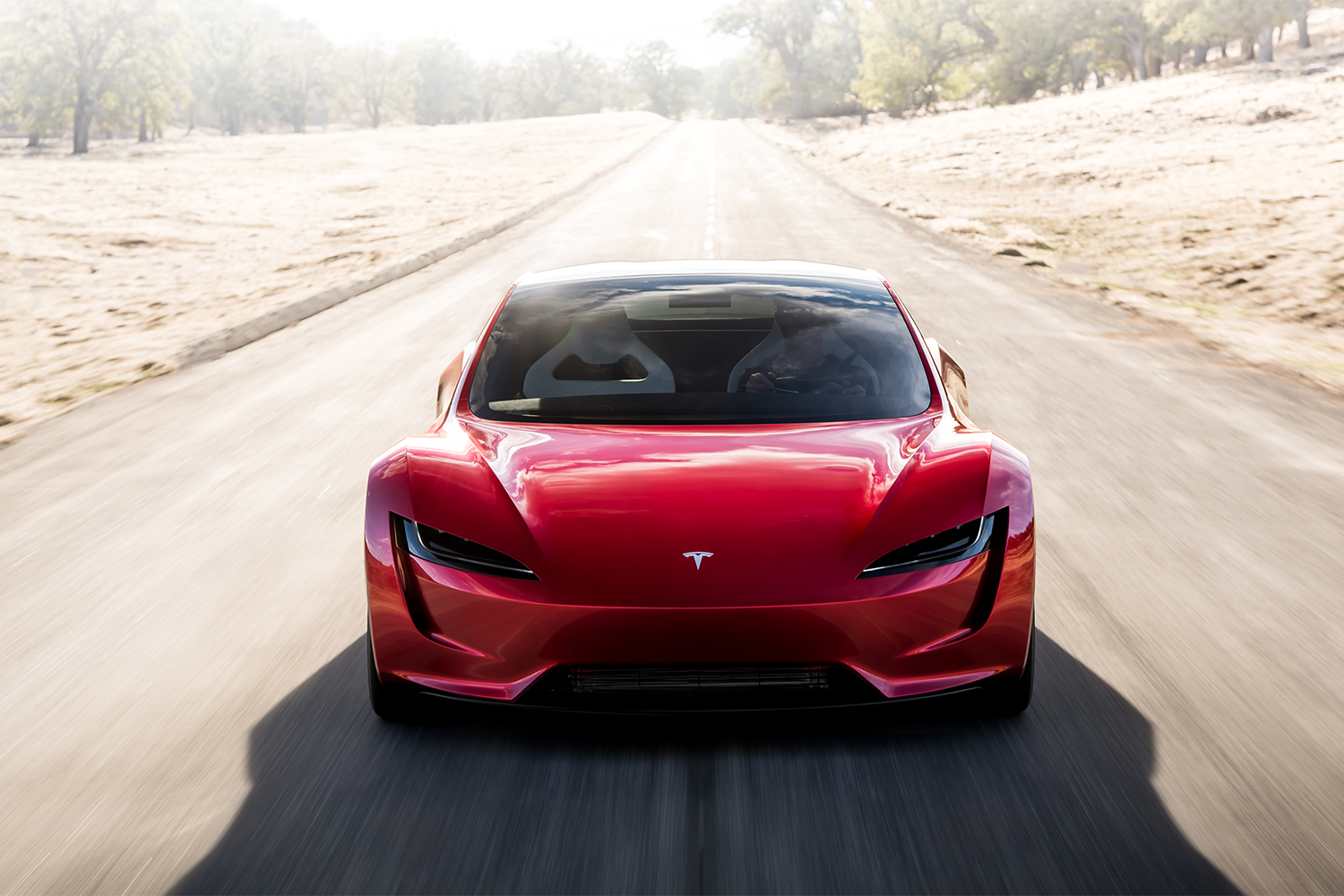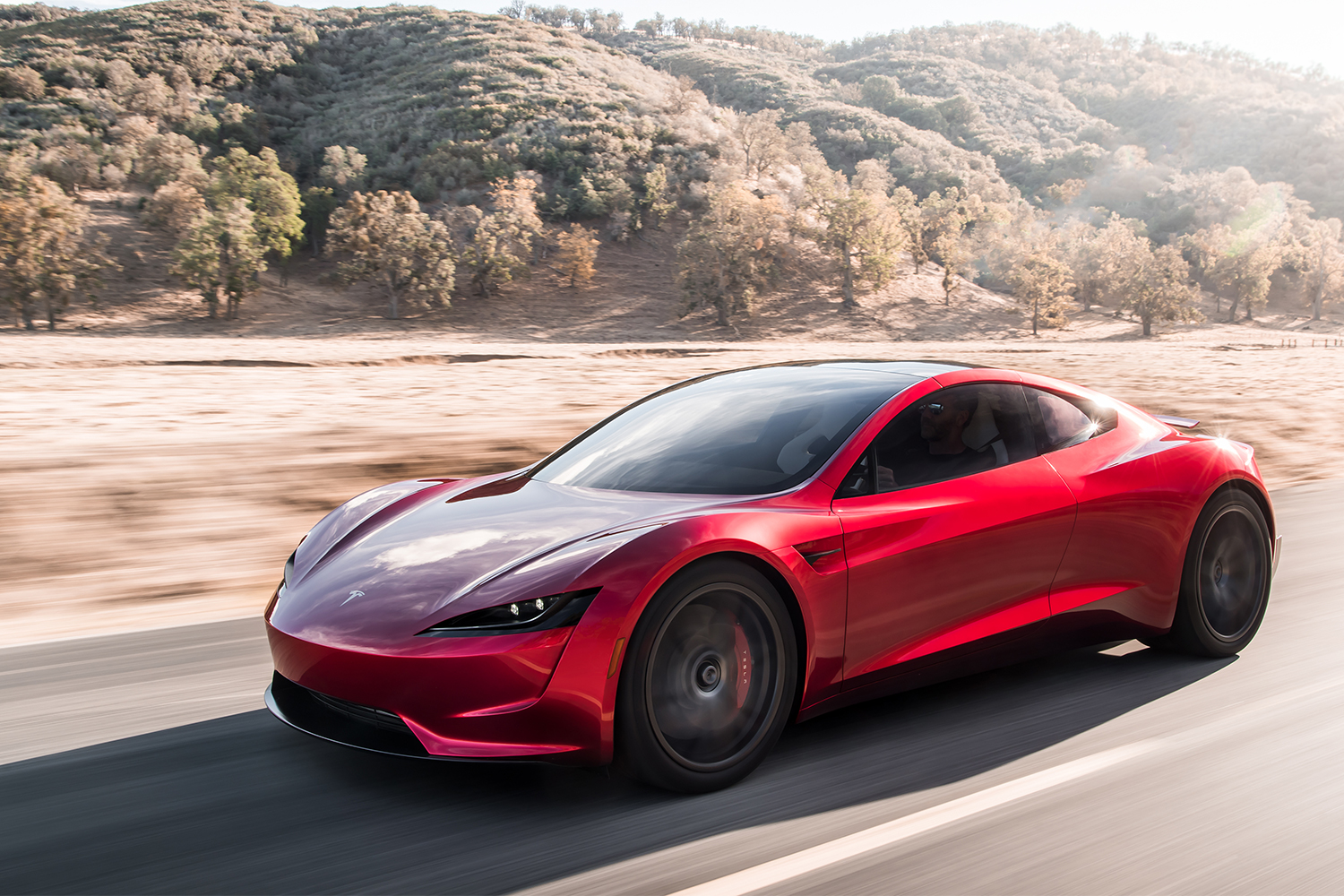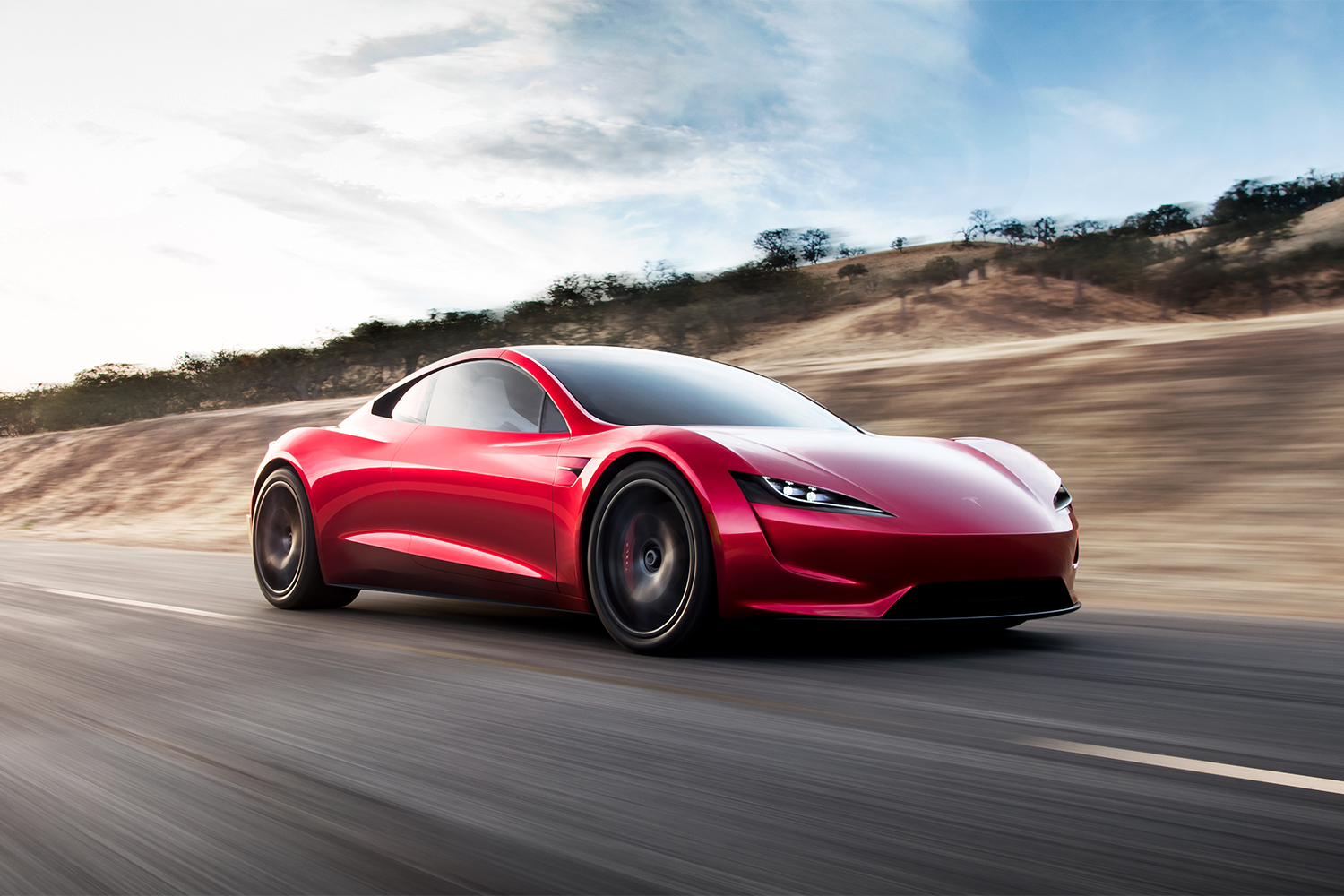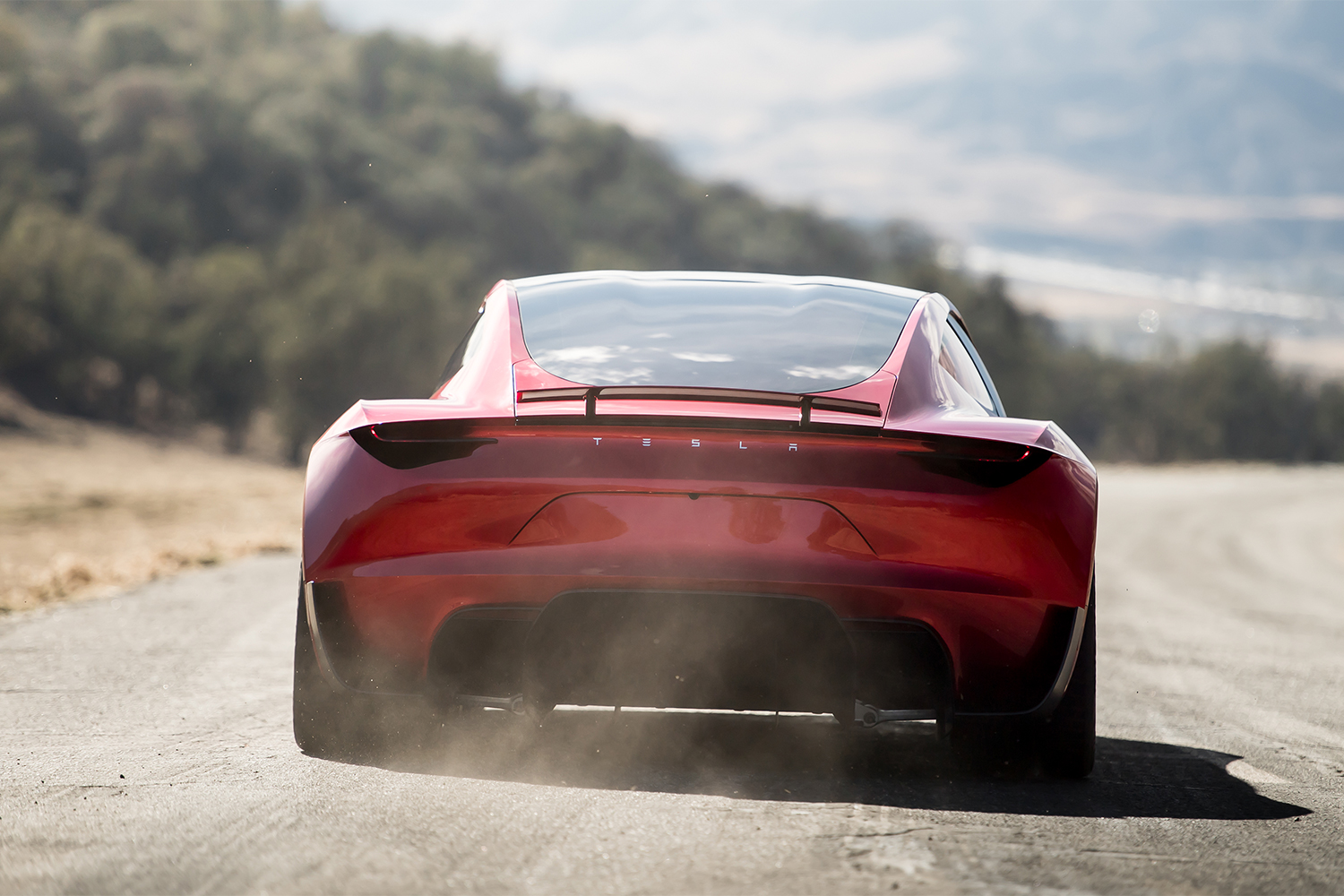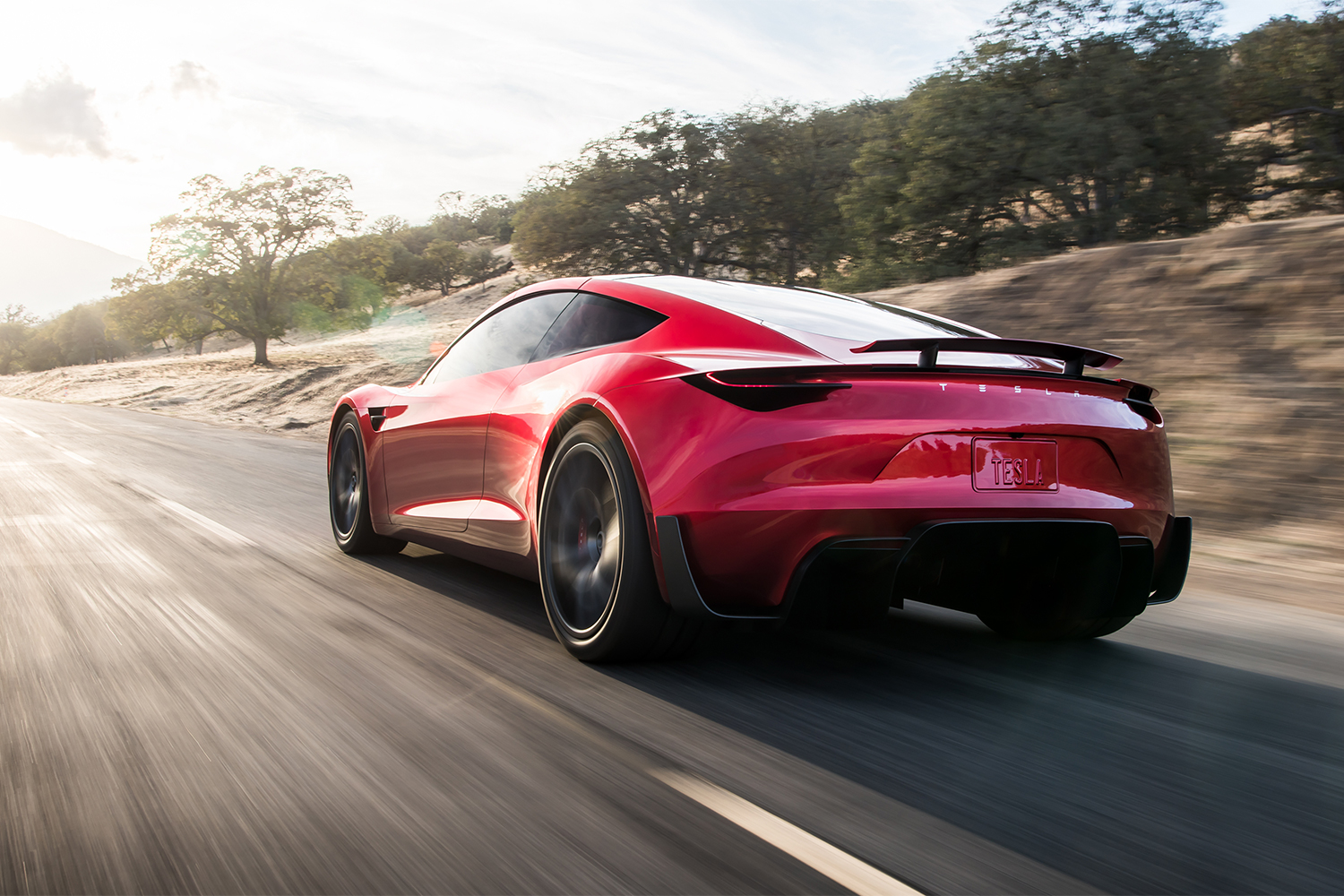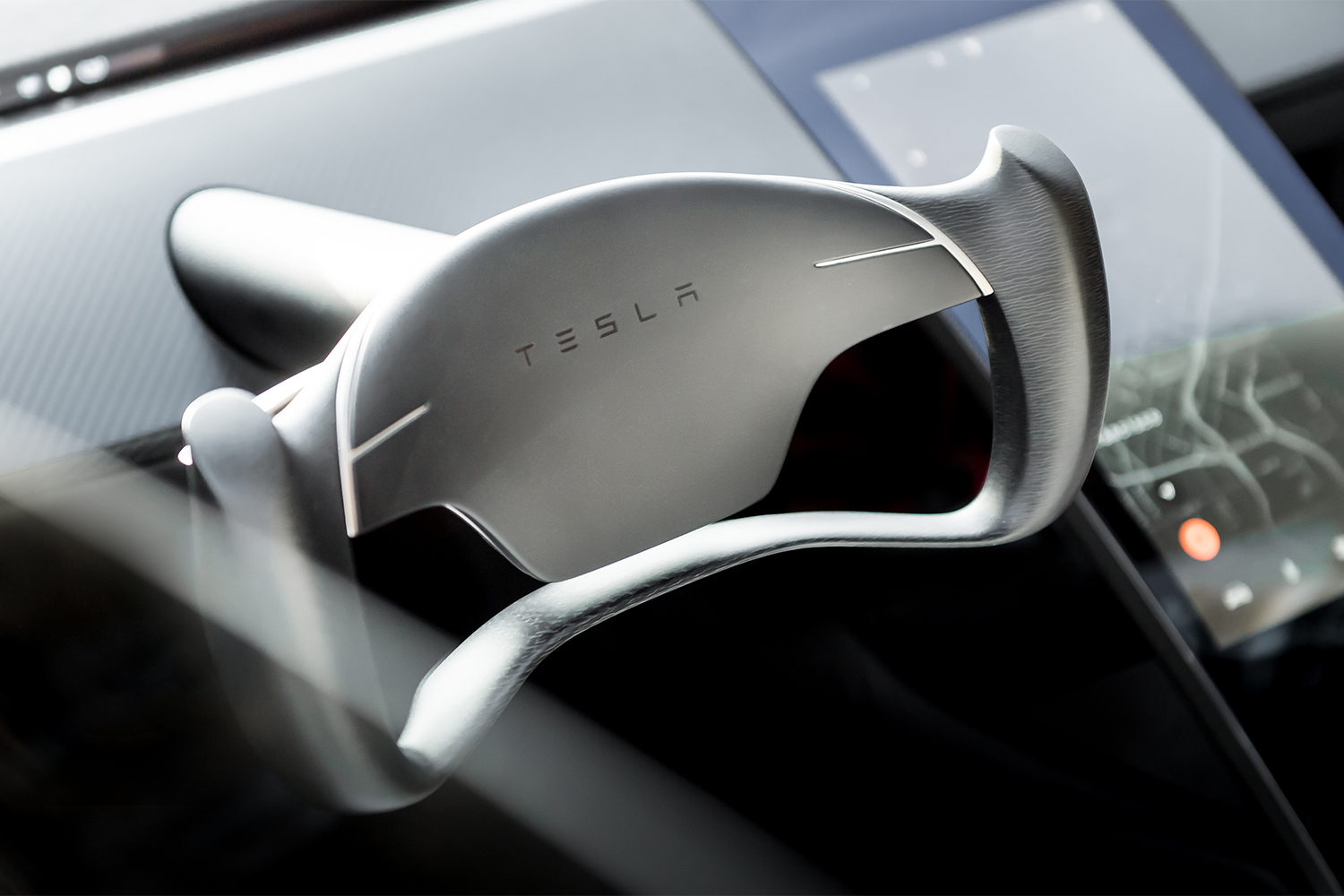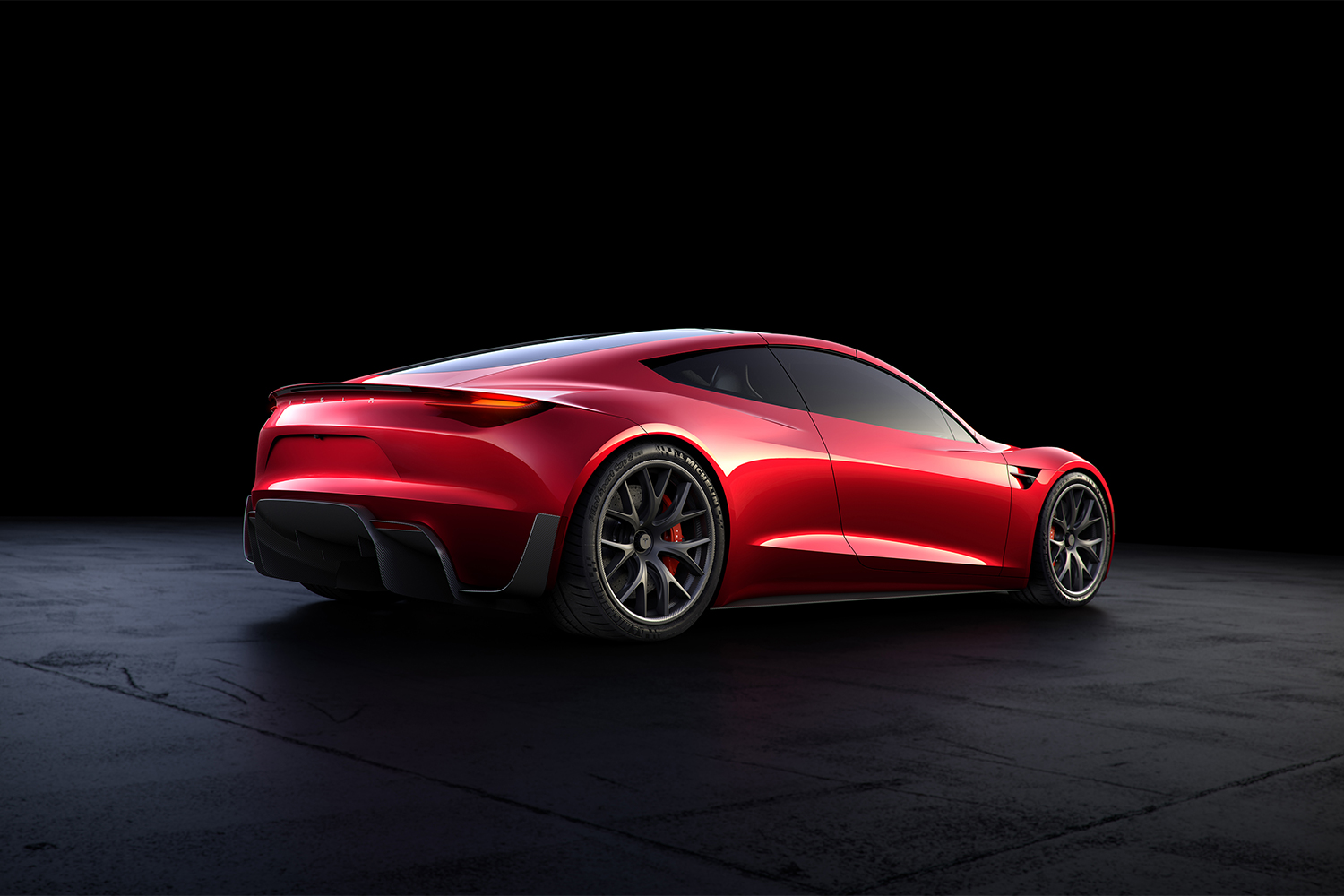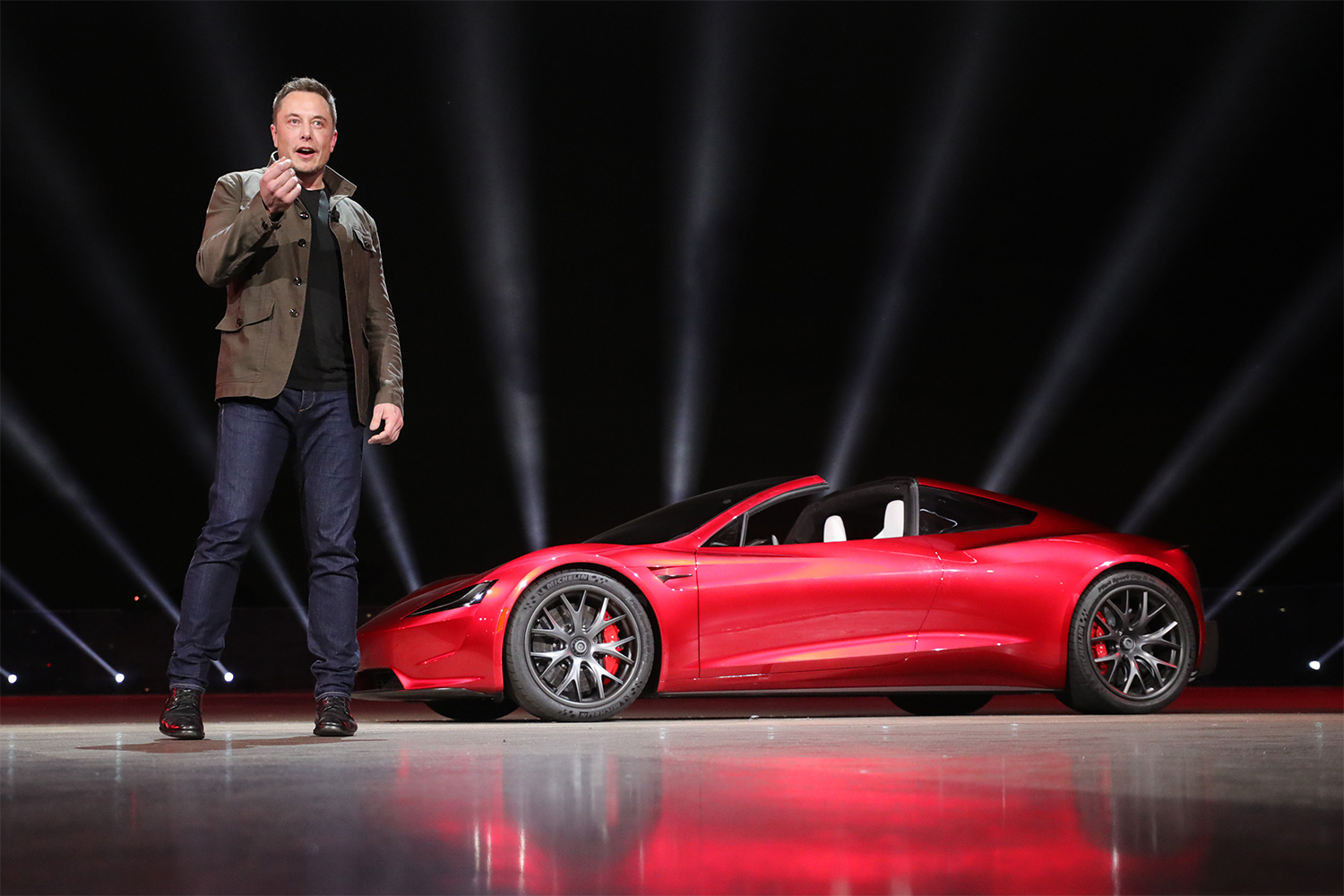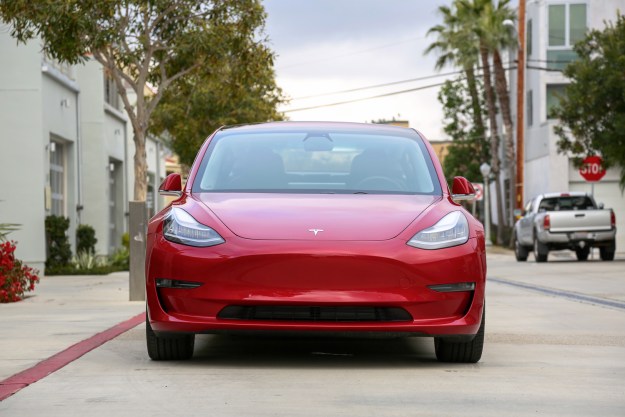Tesla doesn’t have a long story, but it has a complicated one. The company got its start in 2003 with the mission to “accelerate the day of electric vehicles,” but 16 years later, the brand’s portfolio has grown far beyond that. Tesla now makes electric cars, home and commercial energy storage systems, solar panels, roof tiles, and yes, even semi-trucks. It all started with the Roadster, though, so its successor must push the boundaries even further, and boy, does it ever. It will be one of the quickest cars on the planet, and company co-founder Elon Musk promised it will be capable of hovering above the road thanks to technology normally found in rockets.
Expected to arrive in 2020, the all-wheel drive Roadster boasts a spec sheet that would make a superbike jealous: A 200kWh battery pack, 0 to 60 mph in 1.9 seconds, 0 to 100 mph in 4.2 seconds, and the quarter-mile dealt with in 8.9 seconds. These are record-shattering (albeit unconfirmed) performance numbers, but that’s not all; Musk mentioned the Roadster was capable of reaching 250 mph in testing. According to the CEO himself, “the point of all this is just to give a hardcore smackdown to gasoline cars.”
Outside of boasting incredible acceleration, the Roadster will technically seat four, and it will feature a removable glass roof that fits snugly in the trunk. There will be plenty of storage as we’ve come to expect from Teslas, too, as well as the latest and greatest in driver-assist systems. Range is always a concern with electric cars, but with the second-generation Roadster, there’s almost no reason to stress. That’s because Tesla claims the vehicle will be able to travel a whopping 620 miles between charges, which is more than some diesel cars can do.
“These numbers sound nutty, but they’re real,” Musk said at the event.

Replying to a photo of the DeLorean DMC-12 from Back to the Future posted on Twitter, Musk Musk said “the new Roadster will actually do something like this.” Details remain few and far between, but he explained the Roadster will “use SpaceX cold gas thruster system with ultra high pressure air in a composite over-wrapped pressure vessel in place of the two rear seats.” Precisely how and when the feature will work is unclear, but motorists will be able to “accelerate at the limit of human endurance.”
Of course, all these nutty figures and features come at a cost, which brings us to the Roadster’s price. The base model will start at $200,000 with a $50,000 deposit required up front, but the first 1,000 examples will be dubbed the Founder’s Series and will require the full $250,000 up front. That may sound like a lot (and it is), but if you consider how much faster the Roadster is than, say, the $1.15 million McLaren P1, it’s actually quite the bargain.
The new Tesla Roadster is due in 2020.
Updated on January 11, 2019: Added information about the Roadster’s hovering feature.
Editors' Recommendations
- Tesla Roadster: speed, range, price, rumored release date, and more
- Tesla Cybertruck delay means it won’t hit the road until next year
- Elon Musk wants the upcoming Tesla Roadster to hover
- How much is a Tesla?
- Tesla delays the $200,000, 250-mph Roadster until late 2021 at the earliest


